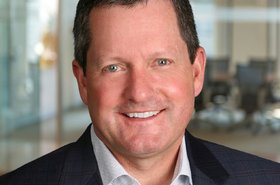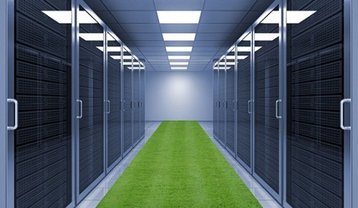Few industries have done quite as well as the data center sector over the past 18 months, especially the hyperscalers.
Yet now, the industry is facing a number of significant tests – and not just the big challenge of meeting the net-zero carbon emission promises they’ve made in recent years. In common with many industries, the data center sector is facing inflationary pressures, but ones that may prove hard to pass onto customers.
“Global buyers are exerting aggressive pricing pressure, while expectations of improved sustainability and emissions on data center providers have increased. As land costs, labor shortages, and underlying commodity prices increase, this is causing margin compression for these suppliers.” says John Gould, chief revenue officer at Enchanted Rock. “Right now, we see land costs in Northern Virginia, Frankfurt, London and Dublin – all the major hubs – increasing astronomically.”
Indeed, data center operators will need to invest considerable amounts over the next decade if they are to even to come close to meeting the big sustainability promises they have made in recent years. Furthermore, in some cases, sustainability commitments are also being written into contracts.
“The most innovative market leaders will leverage disruptive, new models to improve emissions and reduce costs. The providers who first make these improvements will be rewarded with a greater mix of colocation leases. Additionally, these providers should be able to improve their underlying project yields and reward their investors.,” Gould says.
While the industry is growing strongly, many of these pressures can be brushed aside. But resilience and sustainability promises can’t, which is why data center operators need to have solutions that maintain resilience, contain costs and get them closer to meeting their net-zero carbon emission targets.
Gould believes that gas-based microgrids can go a long way in helping achieve all three.
“Enchanted Rock uses the term dual-purpose microgrid. The idea is that it is not just a typical emergency backup solution for resiliency, although that's one of its purposes. It's also providing a grid stability service, something that’s become increasingly important with the spread of renewable energy.
“If you aggregate 50 commercial microgrid installations of 10MW each, you suddenly provide approximately 500MW of additional capacity for peak grid requirements,” says Gould.
Aggregating requirements across customers in a wide geographic area not only cuts costs but helps maximize renewable energy use. “If the grid in any of those respective areas is challenged because 30 percent of it is tied to renewables, the sun isn’t shining or the wind isn’t blowing for a number of days, it gives grid operators some options to contact the likes of Enchanted Rock for up to 200MW of power in ‘island mode’ to stabilize their supply-demand imbalance.”
Certain markets in the US, like ERCOT in Texas, he adds, are pure electricity markets that also offer market participation programs providing both grid support and host client revenue-generation opportunities. “Enchanted Rock has ultra-clean natural gas backup generators with far better emissions that don’t have the same limitation of hours as diesel.
“Therefore, when circumstances occur and the grid has a demand or supply imbalance, Enchanted Rock microgrids can create power for the grid and sell it back in the wholesale market.” says Gould. Such a dynamic ought to help alleviate some of the supply-demand imbalances and consequential sharp price spikes that Texas endured during the outage earlier this year.
In this way, Enchanted Rock can monetize the natural gas microgrids it operates on behalf of its customers, helping to lower their costs. In the end, microgrids provide a highly resilient emergency backup solution with cleaner emissions that help commercial customers improve their environmental and social governance (ESG) initiatives.
Paying up
What ought to make Enchanted Rock’s model so compelling is the structure of the agreement. Enchanted Rock offers a long-term (15-20 years) resiliency-as-a-service model whereby the client provides a capital contribution to the project (typically well below the actual cost of the solution).
Enchanted Rock determines realistic projected revenues over the term of the agreement. Based upon this expected value, a net present value (NPV) analysis is done and provides a ‘discount’ to the total capital expenditure required for the project. In this way, a commercial organizations can benefit from a clean, highly resilient backup solution at a lower cost than installing traditional diesel backup generators, which can account for upwards of 10 percent of a data center’s cost.
An alternative approach is to utilize renewable power, such as solar, for power during the day and then switch to battery storage at night. This offers carbon neutrality, admits Gould, but carries with it significant risks in terms of resiliency and cost. “Beyond the fact that batteries are quite expensive, today’s technology limits these to about four hours – not an effective long-duration solution,” warns Gould.
Furthermore, what happens if there’s a grid outage during the evening hours after you’ve used up three hours of your battery capacity? “Something has to recharge those batteries. If the sun isn’t shining for the next three days, the power is out. Alternative resiliency is required to bridge that gap. Renewables and battery storage are great for daily usage and optimization but are not currently a long-duration resiliency solution.”
As the Texas winter storm Uri power outages in February indicated, even diesel backup can be challenged by bad weather impeding delivery of more fuel just when it is needed. Gas, on the other hand, is not just resilient to cold weather (provided temperatures don’t fall below -160 degrees celsius), but is piped in through a reliable underground infrastructure rather than trucked in.
“If you look at the emissions in the Enchanted Rock solution, they are far less than diesel by orders of magnitude,” says Gould, adding that gas turbines can also use renewable natural gas (RNG) as well, generated from landfill sites and dairy farms. Indeed, with an economic incentive to capture and recycle those emissions, it could be argued that RNG is more environmentally and economically friendly than batteries.
“It's like a carbon offset, where for every unit you use of natural gas, you're offsetting it with a RNG contract. So, it truly is a carbon neutral, perhaps carbon negative, proposition.”
Diesel has traditionally dominated data center backup due to lower cost. However, the story is changing. Sustainability demands, microgrids, and grid balancing services have changed the equation in favor of gas, and business models like Enchanted Rock’s can completely remove backup hardware costs from capital expenditure as well.
More...
-

Sponsored Three big industry challenges and how the self-sufficient microgrid can help solve them
A microgrid offers a resiliency solution optimizing investments in backup power while supporting grid stability and increasing penetration of renewable energy assets as Allan Schurr of Enchanted Rock highlights
-

Sponsored Going beyond compliance: When compliance alone is not enough
Data center diesel back-up hasn’t changed for more than 20 years, but there is a better way that should satisfy everyone
-

Texas power crisis highlights US energy security challenges
February’s devastating winter storms that took data centers offline and left millions freezing put US resilience into sharp focus

